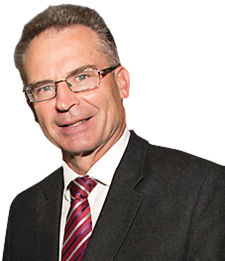THE 2017-18 annual report of the Suburban Land Agency (SLA) reveals that none of its targets for affordable housing, public housing or community housing have been met.
The failure to meet these targets is the more egregious having regard to how small and inadequate they were in the first place.

The targets were described in March by Prof Peter Phibbs, of the Housing and Urban Research Institute at the University of Sydney, as “so small they’re almost insignificant”.
Prof Phibbs said: “It strikes me the government isn’t really doing the job. I’m surprised they aren’t doing more… you’ve got a supposedly progressive Labor government, one that controls the land supply lever and it’s not using it.”
He went on to note the high land-sales profit margins being achieved by the ACT government and said: “If they’re simply taking the revenue from land sales to run various parts of the government, then to me it looks like the government is part of the problem.”
Despite Prof Phibbs’ derisory dismissal of the affordable housing targets as so small they’re insignificant, the government fell well short of meeting them. The target for affordable housing was 353 but only 288 sites were released or 19 per cent short of target; the target for community housing sites was 34 but only 20 were released or 41 per cent short of target; and 113 public housing sites against a target of 143 were released which is a shortfall of 21 per cent.
The SLA missed almost all of its financial targets by significant amounts. Total income was $397.9 million, almost $200 million down on the original budget of $596.5 million, or just two thirds of the original budget. The targeted dividend to government was missed by more than $80 million, delivering $161.3 million against the original budget of $242.6 million.
In addition to the dividend, the territory Budget also receives a range of other payments, for example, for the land transferred to the SLA, as well as payments of payroll tax, stamp duty and National Tax Equivalent. Therefore, altogether the ordinary return to government was $248.7 million against a budget of $364 million meaning there was a shortfall of $115 million.
What is particularly interesting is that the government made up in part for the shortfall in ordinary returns by increasing the capital distribution required of the SLA from a budgeted $39.5 million to $75 million.
A consequence for the SLA of this very significant increase in capital withdrawal is the impact it has had on its current ratio. The current ratio is the standard measure of an entity’s liquidity, or its ability to meet its liabilities. It is the ratio of its current assets to its current liabilities. As at the end of the 2017/18 financial year the SLA’s current ratio was 0.9 against a budget target of 1.1.
In other words the SLA does not, because of the decision of the government to strip it of $35.5 million more than it had budgeted for, hold enough liquid assets to meet all its current liabilities.
On the question of the state of the budget there is one other intriguing note in the annual report about the variance in land sales. These were explained as being a result of delayed settlements for Red Hill, Throsby and Denman Prospect 2. The revenue for these delayed settlements will now, of course, be booked in the current financial year, which will (fortuitously, of course) assist in reducing the large structural deficit embedded in the Budget.
What must the Sydney based and essentially nameless and faceless members of the board of the SLA think of their first year’s effort?
A consequence of these failings was not just that it failed to meet its revenue target of $575.8 million by a staggering $187.7 million or by 33.6 per cent but that the shortage of land guaranteed another significant increase in the median price of detached housing in Canberra further exacerbating affordability and pushing the dream of almost all young families with children in the bottom two and a half income quintiles into the never never.
Despite these major failings of the Suburban Land Agency in its first full year of operation, a bizarre outcome of its failure to meet any of its land supply targets led to the actual gross profit margin generated from land sales to grow to 84.1 per cent which is 11 per cent higher than the obscenely rapacious target it had been set by the government of 72.8 per cent. I would not be surprised if even the Russian mafia would blush if it achieved a gross profit margin of 84 per cent on its activities.
Jon Stanhope was chief minister from 2001 to 2011 and represented Ginninderra for the Labor Party from 1998. He is the only chief minister to have governed with a majority in the Assembly.
Who can be trusted?
In a world of spin and confusion, there’s never been a more important time to support independent journalism in Canberra.
If you trust our work online and want to enforce the power of independent voices, I invite you to make a small contribution.
Every dollar of support is invested back into our journalism to help keep citynews.com.au strong and free.
Thank you,
Ian Meikle, editor




Leave a Reply